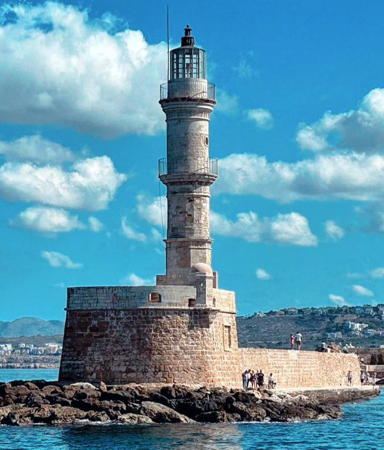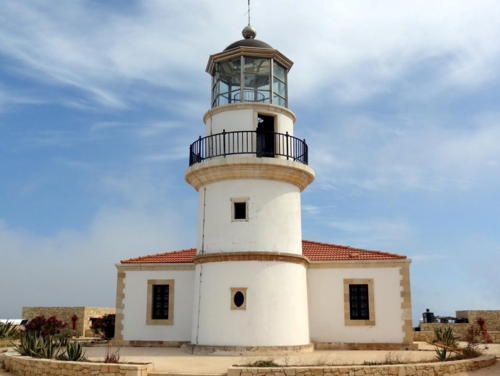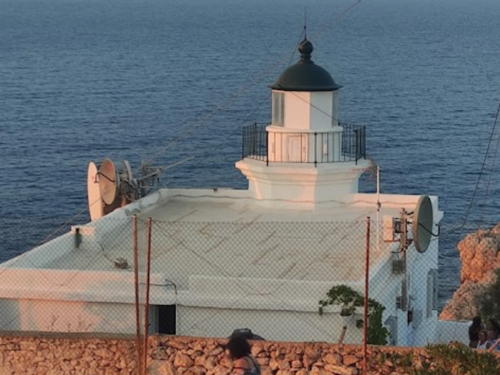The nation of Greece occupies a complex peninsula at the southeastern corner of Europe plus a large number of islands in the Aegean Sea to the east and the Ionian Sea to the west. The name Greece is of Roman origin (Graecia in Latin); the traditional name of the country is Hellas (Ἑλλάς) and its official name is the Hellenic Republic (Ελληνική Δημοκρατία, Ellinikí Demokratía).
The fifth largest island of the Mediterranean, Crete (Κρήτη, Kríti) is 260 km (160 mi) long from east to west but only 13 km (8 mi) to 60 km (37 mi) in width; it separates the Aegean Sea to the north from the main portion of the Mediterranean Sea to the south. Venice governed Crete from 1212 to 1669, when the island came under the rule of the Ottoman (Turkish) Empire. During the 1800s repeated rebellions and much political maneuvering led to Crete's becoming an independent Greek republic in 1898. The Cretan Republic was unified with the Kingdom of Greece in 1913 after the end of the Balkan Wars.
The historic lighthouses of the island are often described as Venetian but most of them were built by French engineers in the early 1860s while the island was under Ottoman rule.
Greece is divided into thirteen administrative regions called periferies (περιφέρειες). Crete is one of these regions. It is subdivided into four districts called regional units (enótites, ενότητες): Chania, Rethymno, Heraklion and Lasithi.
The Greek word for a lighthouse, pháros or fáros (φάρος), is the root for the words for lighthouse in many Western European languages. In Greek nisi is an island, ýfalos is a shoal or reef, akrotíri or ákra is a cape or headland, kolpós is a bay or gulf, ekvolí is an estuary, potámi is a river, and limáni is a port or harbor.
Lighthouses in Greece are maintained by the Hellenic Navy Lighthouse Service.
ARLHS numbers are from the ARLHS World List of Lights. Admiralty numbers are from volume N of the Admiralty List of Lights & Fog Signals. U.S. NGA List numbers are from Publication 113.
- General Sources
- Lighthouses of Greece
- A comprehensive site posted by amateur radio operator Pavlidis Savas (SV2AEL); it includes data and photos for 120 traditional Greek lighthouses.
- Lighthouse Service - Photographs
- A large collection of unlabeled (!) photos of lighthouses.
- Online List of Lights - Greece - Crete - Aegean Sea and Mediterranean Sea
- Photos by various photographers posted by Alexander Trabas. Many photos for Crete were taken by Rainer Arndt in 2020.
- Greece Lighthouses
- Aerial photos posted by Marinas.com.
- Lighthouses in Greece
- Photos by various photographers available from Wikimedia.
- World of Lighthouses - Greece
- Photos by various photographers available from Lightphotos.net.
- Leuchttürme an der griechischen Küste
- Photos by various photographers posted by Bernd Claußen.
- Europäische Leuchttürme auf historischen Postkarten
- Historic postcard images posted by Klaus Huelse.
- Google Maps
- Satellite view of Crete.

Chania Light, Chania, October 2023
Instagram photo
by Neil St. George






